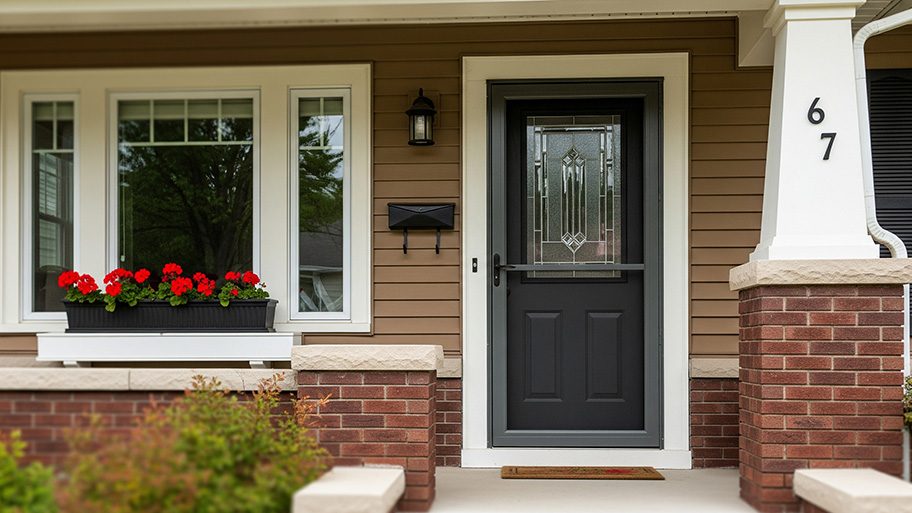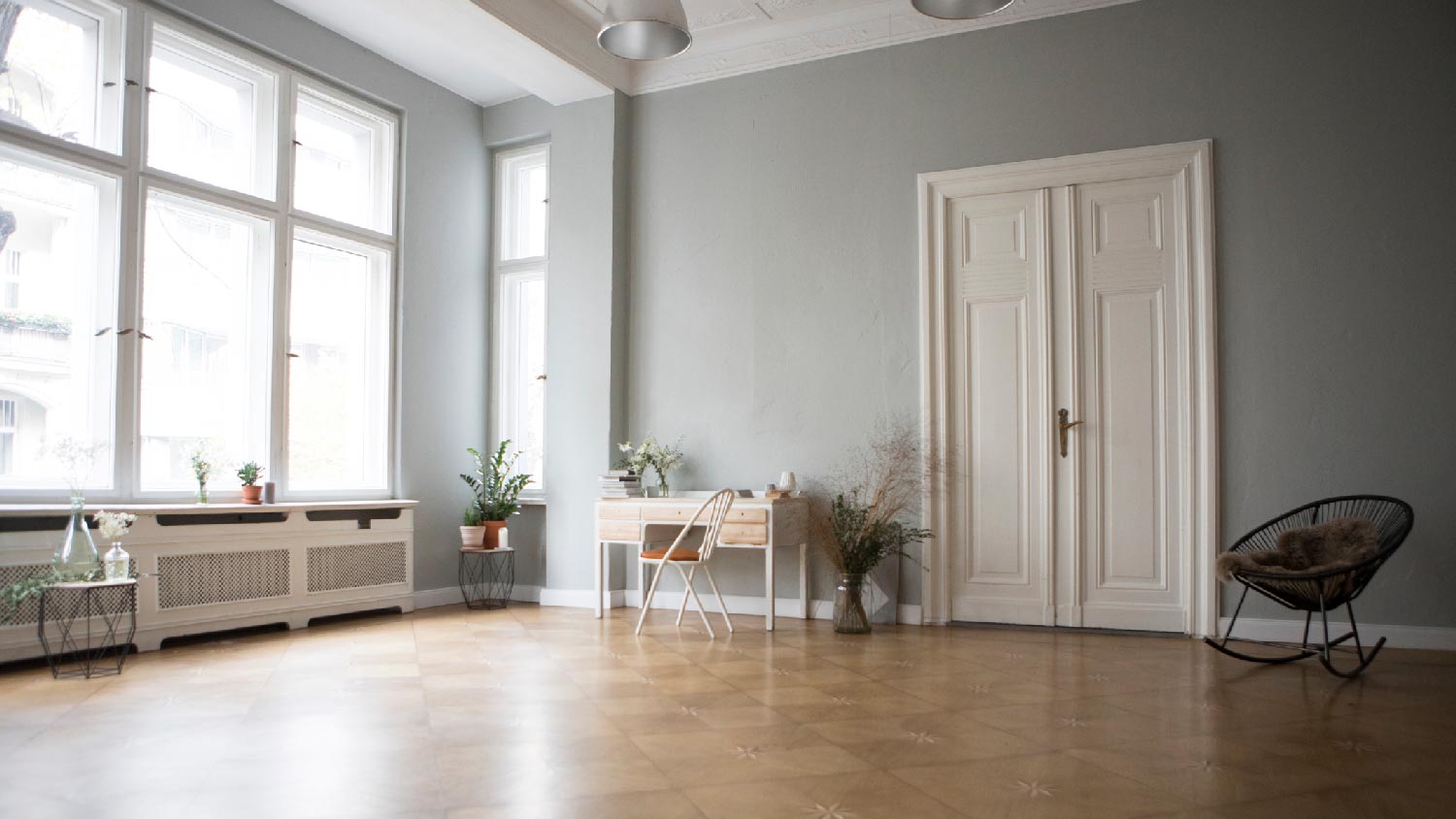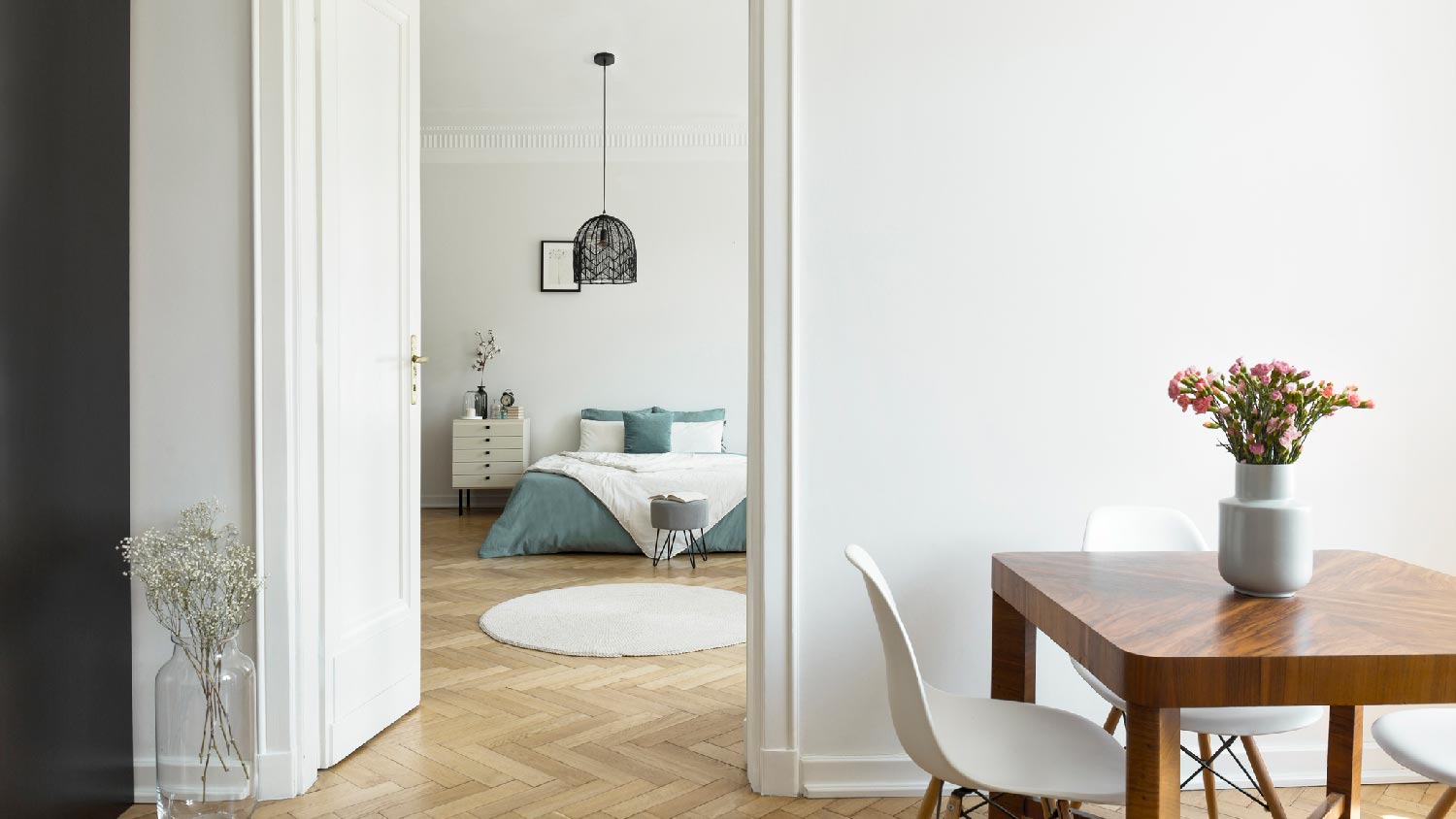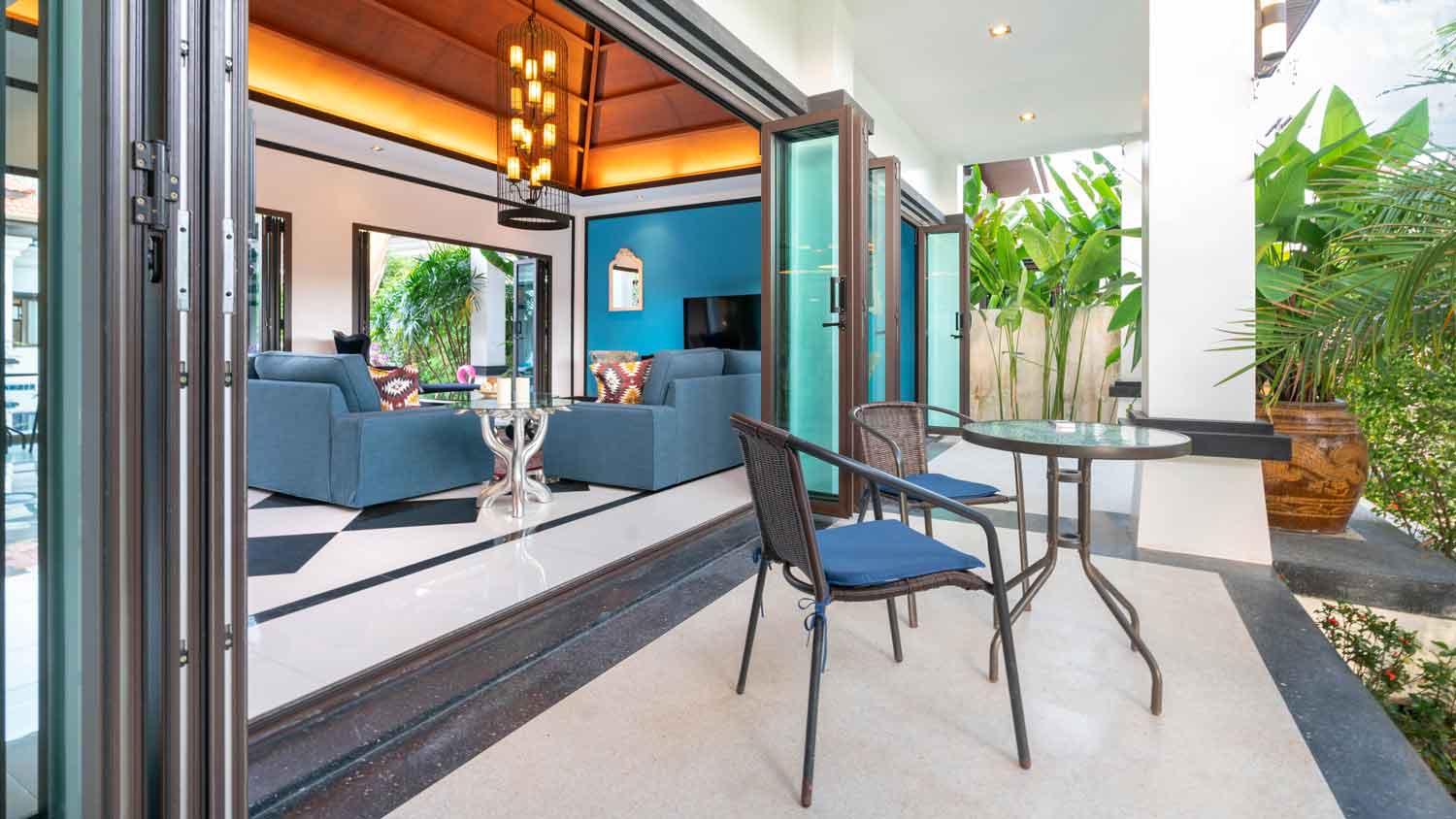
A storm door can protect your front door and let in more fresh air. Find out how much storm door installation costs for materials, labor, and more.
Do yourself a solid and get to know when to use each type of door


Solid core doors offer better security and durability, but they’re heavier and pricier.
Hollow core doors are lighter and easier to install.
Homeowners can save money by installing a hollow core door themselves.
Hollow core doors can dent or break in under 30 years, whereas solid core doors can last 40 years or longer.
Who knew that buying a new door would uncover such a heated debate? The solid core vs. hollow core door battle is a complicated one, as each option has its ups and downs. After all, the cost of installing a new door is a huge factor in your decision, and you'll find quite a gap between the two styles. Let's explore if and when a hollow core vs. a solid core door is right for your home.

A solid core door is filled with dense material like wood or composite, offering great sound insulation, a sturdy feel, and better security—but it’s heavier and usually more expensive. A hollow core door, built with a lightweight frame and thin panels around an empty or honeycomb interior, is easier to install and more budget-friendly. However, it offers less noise control and durability compared to its more solid alternative.

A solid core door is the happy middle ground between a solid wood and a hollow core door. The design uses some of today's strongest and most cost-effective materials such as MDF, or medium density fiberboard. For example, a solid core door may include a center of MDF surrounded by a decorative wood veneer. The shift to solid core has its perks. Solid core doors hold up well against temperature and humidity changes, and do not cost nearly as much to make as solid wood doors.
| Pros | Cons |
|---|---|
| Strong soundproofing | More expensive |
| Good insulation | Heavy |
| Rarely warps or expands | Hard to install |
| Fireproof rated | Tricky to repair |
| Strong security |
Best for: Privacy and security-conscious homeowners
The top benefit of a solid core door is its strength. Not only will it last longer and be less prone to damage, but it will increase the room's security as well. Solid core doors offer better soundproofing and insulation, making this a great pick for bedrooms and the door between your porch and the foyer. Additionally, solid core doors are less likely to warp when the weather changes.
While solid core doors aren’t the most expensive option out there, you'll still spend far more than the hollow design. Solid core interior doors cost between $70 and $500, whereas hollow core doors cost as low as $30 to $400, and hollow core doors are DIY-friendly. Solid core doors can also be hard to repair due to the multiple layers of varying materials, and because they’re so heavy, you'll almost always need to hire a local door installation team to help get it on its hinges.

Hollow core doors are almost exactly as they sound. The design features an outer shell of wood or fiberboard. The interior is not quite hollow, but it's close. A honeycomb of paper or plastic offers support to the structure without filling the whole core. They are very easy to maneuver and cost much less than solid core or wood doors. That being said, you'll only find these lightweight doors inside a home.
| Pros | Cons |
|---|---|
| Lowest door cost option | Not rated for fireproofing |
| Easy to install on your own | Easily damaged |
| Easy to paint and finish | Minimal soundproofing |
| Doesn't warp or expand | Low insulation |
| Minimal security |
Best for: Budget-conscious, DIY-friendly homeowners
Before you sign on for a solid core door, consider that hollow core doors have many upsides as well. Opt for a solid core door if you want to install it yourself without calling a professional. Hollow core doors are ideal for DIY pocket doors, closets, and pantries, for example. Similar to solid core doors, they will not warp in the heat and humidity, and come painty-ready.
On the other hand, designers don't often recommend hollow core doors for rooms that require weather and soundproofing. The thin interior allows sound and cool breezes to sail right through. Additionally, hollow core doors will rarely pass fire-rating requirements if you need to meet building codes for your particular entryway. Hollow core doors also offer less security since they are thin and easy to manipulate.

If lined up side by side, how does each type fair in the solid core vs. hollow core fight? Let's break things down further.
| Solid Core vs. Hollow Core Doors | Solid Core Doors | Hollow Core Doors |
|---|---|---|
| Appearance | ✓ | |
| Price | ✓ | |
| Durability | ✓ | |
| Soundproofing | ✓ | |
| Insulation | ✓ | |
| Resale Value | ✓ | |
| Ease of Installation | ✓ |
Solid and hollow core doors look similar at first glance. However, there's no question that solid core doors have a more stable and high-quality appearance. They will also feel different when handled, beating out the hollow door competition pretty easily.
As we touched on above, hollow core doors can cost less than half of solid core doors. Additionally, you can often install hollow core doors yourself, saving between $40 and $90 an hour on labor alone.
A solid core exterior door can last 40 years or more. The hardware is more likely to go before you need to replace the door slab itself. Hollow core doors, however, are not as structurally sound, and can dent or break down in fewer than 30 years.
High-quality doors can increase your home's resale value. If you plan to sell your home in the near future, a premium door material like solid wood or steel can make a positive impression on potential buyers.
The interior of a solid core door is dense enough to block out much more sound than a hollow core door. Exterior, bedroom, and office doors will all benefit from something stronger than a hollow door. That being said, you could consider soundproofing a hollow core door to save money.
Knowing the R-value of your door can save you money on utility bills. Solid core doors have a higher R-value than hollow core doors. This is just one of the reasons that hollow core doors are not a good match for exterior entryways.
Unsurprisingly, solid core doors have a higher resale value than most hollow core doors. They make a room look, sound, and feel better—and for a longer period of time. If you're considering selling your home, consider the higher return on your investment by opting for a solid core door.
Even if you're particularly strong, installing a heavy door on your own is far more difficult than a lightweight door. A professional can ensure that a heavy door sits properly on its hinges. A hollow core door can be ordered as a pre-hung door that’s already set on its frame, and is easier to hang on your own.
From average costs to expert advice, get all the answers you need to get your job done.

A storm door can protect your front door and let in more fresh air. Find out how much storm door installation costs for materials, labor, and more.

Are you looking to upgrade an old door in your home? Use this interior door installation cost guide to estimate the project's total cost and learn how to save.

When adding a fresh new entryway to your home, you may be curious about the cost of sliding glass doors. Let's break it down by size, style, and design.

A storm door offers protection, security, and energy savings, but do you need one? Learn the pros and cons to see if a storm door is right for your home.

Folding patio door costs vary greatly depending on the size of the opening, door material, type of glass, and level of customization.

What is a strike plate in a door? It's one of many door parts, but this small piece is vital to a door's functionality and security.